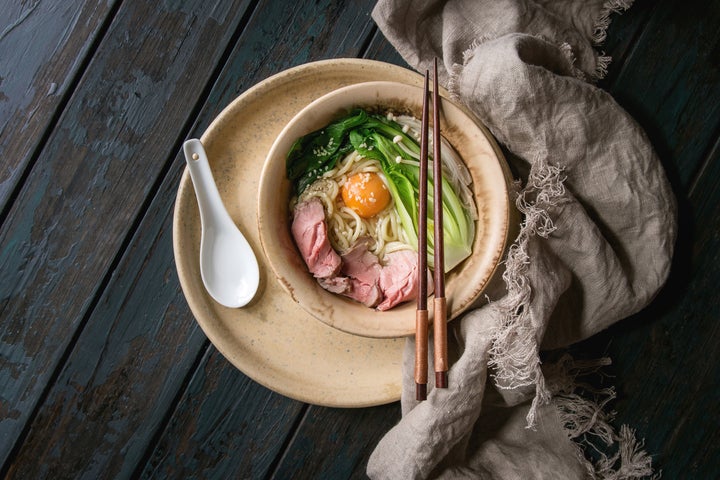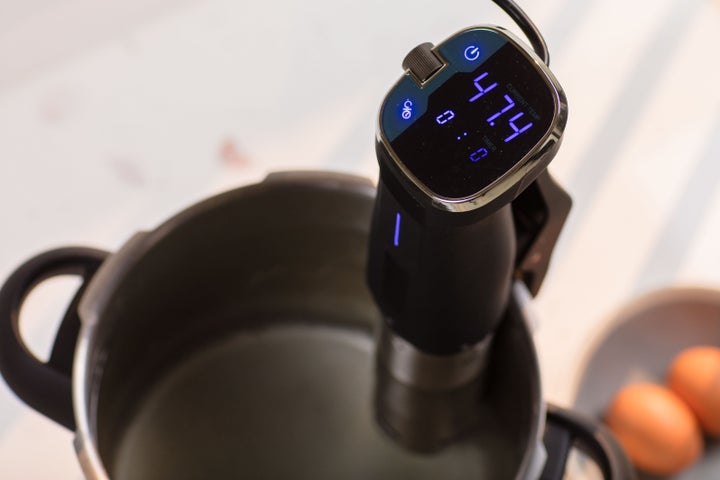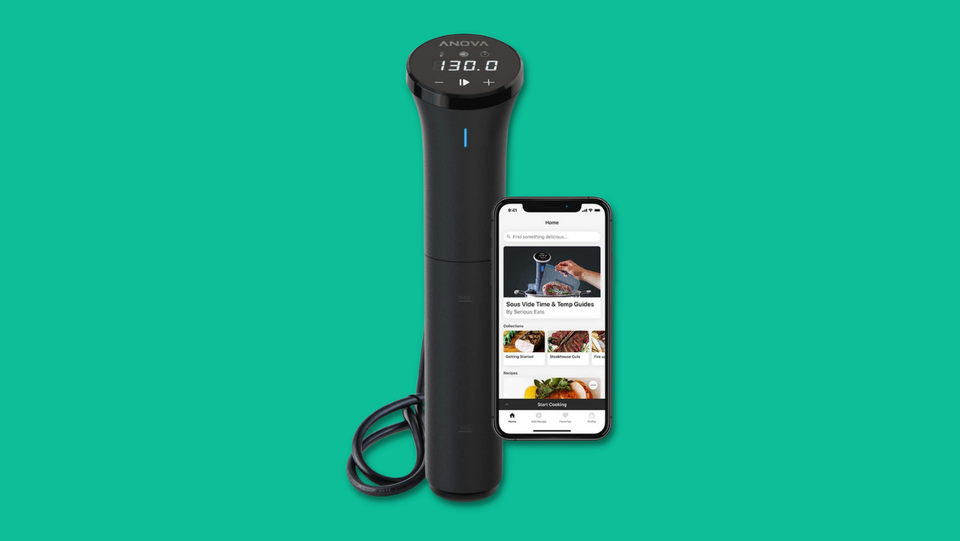At the beginning of every new year, we make dietary promises to ourselves: Eat more of this. Drink less of that. We sometimes succeed. More often, we give up and go back to our old habits.
This year, instead of restricting ingredients or substances, why not learn a new technique? By replacing sautéing with sous vide cooking, for instance, you can cut down on fats, lock in nutrients and save on food waste — not to mention make it a snap to clean up.
What is sous vide?
In the 1970s, French chef Georges Pralus discovered the sous vide method when he was trying to keep a piece of foie gras at its precooked size at the restaurant Troisgros. He vacuum-sealed it in a bag and cooked it by bathing it in hot water, reducing shrinkage by 35%. At the same time, he accidentally realized that he had greatly enhanced the flavor of the dish — voila!
Sous vide is French for “under vacuum,” and it’s defined as “raw materials or raw materials with intermediate foods that are cooked under controlled conditions of temperature and time inside heat-stable vacuumized pouches.”
It’s actually a lot easier than it sounds, and it’s achievable for home cooks at almost any level.
“Sous vide is simply cooking food in a sealed bag at a consistent temperature,” said Rowena Murakami, who directs culinary content for the blog Tiny Kitchen Divas. “The temperature of the water is the exact temperature that you want the food to be cooked at.”
For instance, if you want to cook a rare piece of beef, which measures at an internal temperature of 125 degrees Fahrenheit, you place it in an airtight plastic bag filled with aromatics (herbs, spices, marinade) in water of the same temperature for at least an hour.

What are the benefits of sous vide?
You can cook almost any type of food sous vide-style. Using this technique allows for uniformity throughout a protein — eliminating a result that’s medium-rare on the thick end but well-done on the thin end.
Sous vide cooking prevents bacteria from getting to the food, removing the threat of foodborne illness. It also prevents oxygenation, which can “destabilize nutrients,” Matt Rojas, formerly a chef at Rouge et Blanc and Eleven Madison Park, told HuffPost.
In fact, sous vide is the best way to seal in vitamins and minerals. A 2017 study published in the journal Food Science & Nutrition compared the nutritional content in 50 samples of legumes and cereals, which were prepared using different cooking methods. It concluded that “sous‐vide is preferred as it provides products with a higher concentration of metals [magnesium, potassium, iron, zinc, and copper] compared to the ones cooked with traditional cooking.”
Sous vide also has some hidden benefits. For instance, by cooking sous vide, you won’t unknowingly consume harmful chemicals from a scratched nonstick pan. In addition, “you remove the risk of unwanted substances that are harmful to the body due to the charring process, such as nitrates,” said nutritionist and medical adviser Heather Hanks, who works with Medical Solutions BCN.
How do you sous vide?
Both dry and moist proteins, vegetables and starches are typically vacuum sealed ahead of sous vide cooking.
“Vacuum sealing is a great way to preserve pre-portioned protein, veggies and more ahead of cooking sous vide,” Lauren King, brand director of FoodSaver, told HuffPost. “It creates an airtight seal that ensures water and air do not permeate the bag during the cooking process.”

annick vanderschelden photography via Getty Images
Annie Singer, founder of Reciple, an equitable recipe platform for creators, said that in addition to reducing waste, it’s also a smart way to cook ahead.
“You can use up ingredients before they go bad and freeze them to extend their shelf life, and always have healthy meals on hand, ready to go,” Singer said.
Indeed, when you reduce the oxidation, you require less salt, seasoning, fats and extra flavorings. You can then use up that last cutting of cilantro, a half clove of garlic, a capful of sauce, a dash of salt and/or a bit of oil solely for mouthfeel.
After the food is prepared, you cook it submerged under water, which should be kept at an even, maintained temperature for a directed length of time.
Do you need a vacuum sealer?
A vacuum-sealing device, which comes with pre-made bags and customizable rolls, isn’t necessarily a must-have.
“All you need are some Ziploc bags, a pot of water and the food you want to cook,” registered dietitian Nadia Charif said.
Likewise, Rojas doesn’t use a vacuum sealer. He outlined his steps: “Use a regular Ziploc, put your meat in, whatever aromatics you want, and a bit of oil to fill up the small air pockets that sometimes appear under the meat. After that, close the bag except an inch. Gently submerge the bag while carefully pushing all the air out. When you’re satisfied that it’s removed, seal the Ziploc entirely.”
Do you need a sous vide appliance?
A specialty appliance — called an immersion circulator and/or a water oven — is also unnecessary (but helpful). You can use a pot of water, a waterproof thermometer and heat-resistant clips.
“However, if you want to invest in an appliance to make the process easier, that’s definitely an option, too,” Charif said. “My favorite would have to be the PolyScience Sous Vide Professional. It has a timer and can be set to different temperatures so you don’t have to worry about your food overcooking or undercooking.”
“A sous vide machine used to cost $1,200 and only fine dining restaurants would have one. Even worse, the equipment was finicky and broke a lot,” Rojas added. “I was shocked when I bought my first sous vide device from Anova Culinary. Now I have three of them and I still use them to this day — years of use with no problems!” Check out our favorite sous vide appliances here.
If you don’t care to add another machine to a kitchen already full of them, at least follow the advice of Spring Hill Suites Marriott Panama City Beach chef Manuel Rodriguez.
“The product should be able to get water circulating around it at all times during the cooking process. It is extremely important that your product is completely submerged,” Rodriguez said. “Finally, timing and temperature are important. There are many apps that can help do that if you’re not sure on how to calculate your cooking.”
What are the downsides of sous vide?
If the sous vide method is so easy, with only a small learning curve and lack of equipment, why isn’t every home cook doing it?
One big reason, according to Singer: plastic waste.
“[Because] sous vide involves vacuum sealing or using single-use plastic bags, you will be producing more plastic waste than you might otherwise if you baked, grilled, or boiled,” she said.
This factor is unappealing to some people, although the significant reduction in food waste could assuage the guilt.
But on another note, “sous vide is much slower than other methods of cooking. Cooking a medium-rare steak takes one to four hours, and you may still want to throw it on a hot griddle to sear it,” Singer said.
Rojas agreed, adding that a protein cooked this way could look “anemic and not very appetizing when it comes out of the bag.” Instead, you’ll have to sear it on high heat if you want a nice brown crust.
“Another downside is the meat is encapsulated in a bag and separated from other elements of the dish, so you can’t use it to impart flavor to anything else in the dish,” Rojas said.
Charif also noted that it’s not the best technique for a quick weeknight meal.
“If, like me, you’re a busy person, then it might not be the best method for you ― unless you do it on weekends or when you’re free,” she said.
On the other hand, “it’s the perfect option for people who work from home because you can set your dinner to cook in the early afternoon and it will be perfectly cooked by the time you are done working,” Singer said.
The key, as in all things culinary, is prep. Plan to have a wet January with batch-cooking, vacuum-sealing and sous viding. You could see so many improvements to your health, your nutrition and your overall food costs — while upping your flavor and tenderness game at the same time — that you may never have to make a resolution again.
HuffPost may receive a share from purchases made via links on this page. Every item is independently selected by the HuffPost Shopping team. Prices and availability are subject to change.











More Stories
Air Fryer Steak Bites – Recipes From A Pantry
8 Mocktail Recipes for Any Occasion
Buttery Smashed Potatoes Recipe | Chef Dennis